
The rise of Bangladesh as a textile hub
The transformation of Bangladesh into a global textile powerhouse did not happen overnight. In the early 1980s, the country’s textile industry began to take shape with the establishment of small-scale garment factories. By the 1990s, these factories had grown significantly in number and size, largely due to the availability of cheap labour and favourable government policies.
The Multi-Fibre Arrangement (MFA) played a crucial role during this period, allowing Bangladesh to export textiles to developed countries without facing stringent quotas. As a result, the industry grew rapidly, and by the early 2000s, Bangladesh had established itself as a key player in the global textile market.
Sheikh Hasina’s reported contribution
Sheikh Hasina, who first came to power in 1996, played a controversial but pivotal role in the expansion and modernisation of Bangladesh’s textile industry. Under her leadership, several initiatives were implemented to support the industry, including:
Infrastructure development: The government invested heavily in improving infrastructure, particularly in transport and energy, to support the growing demands of the textile industry.
Export Processing Zones (EPZs): Special economic zones were established to attract foreign investment, offering tax incentives, duty-free imports of raw materials, and simplified customs procedures.
Labour reforms: Although labour conditions in the textile industry have been a subject of international scrutiny, Hasina’s government introduced several reforms aimed at improving worker safety and wages, particularly in the aftermath of the Rana Plaza disaster in 2013.
Diplomatic efforts: Hasina’s government actively sought to strengthen trade relations with key markets, particularly the European Union and the United States, securing preferential trade agreements that boosted exports.
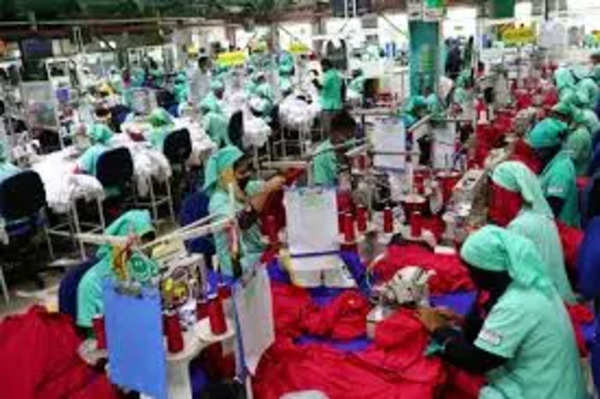
These initiatives, combined with the entrepreneurial spirit of Bangladeshi business leaders, enabled the country to attract major international brands like Zara, H&M, and others, which found in Bangladesh a reliable and cost-effective manufacturing base.
Bangladesh’s textile tndustry: An overview
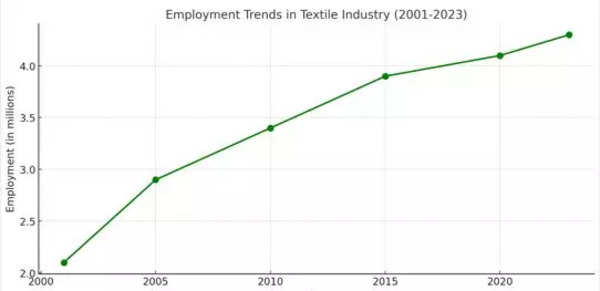
Graph 1: Employment trends in textile industry (2001-2023)
Contribution to GDP and employment
The textile and garment industry is the lifeblood of Bangladesh’s economy, contributing approximately 11% to the country’s GDP and accounting for over 80% of its total exports. According to the Bangladesh Garment Manufacturers and Exporters Association (BGMEA), the industry employs over 4 million people, with women making up the majority of the workforce.
The employment trends in the textile industry also provide crucial insights into the sector’s role in the national economy. The following data represents the employment growth in the textile sector from 2001 to 2023:
Employment in textile Industry (2001-2023)
| Year | Employment (in millions) |
|---|---|
| 2001 | 2.1 |
| 2005 | 2.9 |
| 2010 | 3.4 |
| 2015 | 3.9 |
| 2020 | 4.1 |
| 2023 | 4.3 |
Export growth
Bangladesh’s textile exports have shown impressive growth over the past two decades. From $5 billion in 2001, exports surged to nearly $40 billion by 2023. The following graph illustrates this growth trajectory:
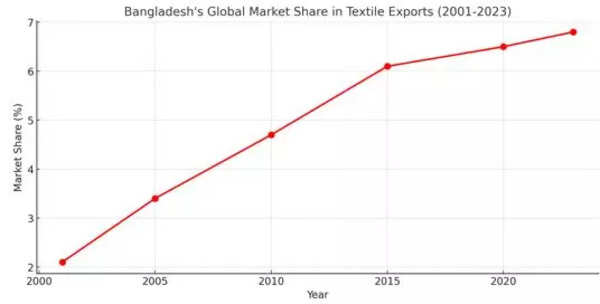
Graph 2: Bangladesh textile export growth (2001-2023)
Growth rate
The graph shows the compound annual growth rate (CAGR) of Bangladesh’s textile exports, highlighting key policy periods and external factors such as the Rana Plaza disaster and the COVID-19 pandemic. The data highlights the steady increase in exports, with notable spikes during periods of significant policy interventions under Sheikh Hasina’s leadership.
Bangladesh textile exports (2001-2023)
| Year | Export Value (in billion USD) |
|---|---|
| 2001 | 5.1 |
| 2005 | 8.2 |
| 2010 | 15.6 |
| 2015 | 26.6 |
| 2020 | 34.1 |
| 2023 | 39.8 |
Market share
Bangladesh is currently the second-largest apparel exporter in the world, after China, with a market share of around 6.8%. The country’s primary markets are the European Union and the United States, which together account for over 60% of its textile exports.
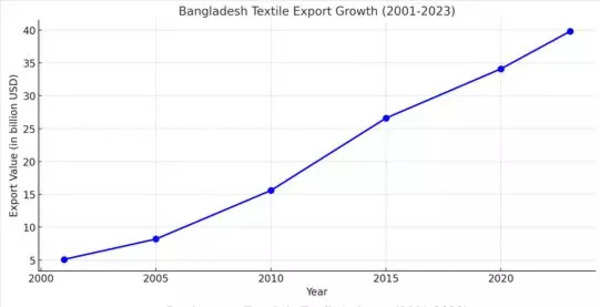
Graph 3: Bangladesh’s global market share (2001-2023)
Bangladesh’s market share in global textile exports (2001-2023)
| Year | Market Share (%) |
|---|---|
| 2001 | 2.1 |
| 2005 | 3.4 |
| 2010 | 4.7 |
| 2015 | 6.1 |
| 2020 | 6.5 |
| 2023 | 6.8 |
The impact of Sheikh Hasina’s ouster on the textile industry
Political instability and investor confidence
The recent ouster of Sheikh Hasina has led to significant political uncertainty in Bangladesh. Political stability is a critical factor for investor confidence, and the textile industry, with its heavy reliance on foreign investment and international trade, is particularly vulnerable to political disruptions.
Foreign investors and international brands may become hesitant to continue or expand their operations in Bangladesh if the political environment becomes unstable. This could lead to a reduction in foreign direct investment (FDI), which has been a driving force behind the industry’s growth.
Potential disruptions in trade relations
Sheikh Hasina’s government had established strong trade relationships with key global markets, particularly in the European Union and North America. These relationships were crucial in securing preferential trade agreements, such as the Generalized System of Preferences (GSP) with the EU, which allowed Bangladeshi products to enter these markets with reduced tariffs.
The change in leadership may lead to renegotiations or even a loss of these trade benefits if the new government fails to maintain the same level of diplomatic engagement. This could result in higher tariffs on Bangladeshi textiles, making them less competitive in the global market.
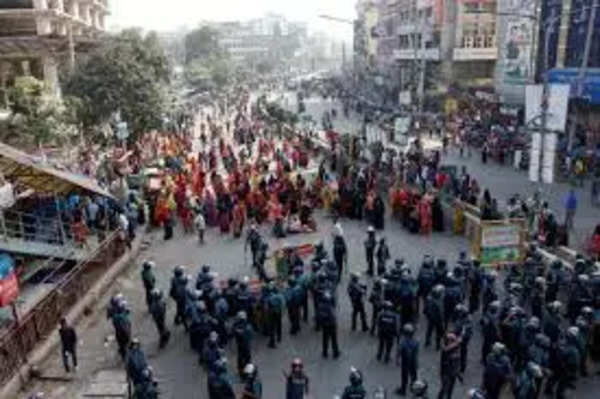
Labour unrest and supply chain disruptions
Political instability often leads to social unrest, and Bangladesh’s textile industry is no stranger to labour disputes. The removal of Sheikh Hasina, who had implemented several labour reforms, could lead to increased tensions between workers and factory owners. Labour unrest could disrupt production schedules, leading to delays in fulfilling international orders and damaging Bangladesh’s reputation as a reliable supplier.
Opportunities amidst challenges
Diversification of markets
While the political situation in Bangladesh presents significant risks, it also offers opportunities for the industry to diversify its markets. The industry could explore emerging markets in Asia, Africa, and Latin America, reducing its dependence on traditional markets in the EU and the US.
Investment in technology and innovation
To remain competitive in a potentially more challenging global environment, Bangladesh’s textile industry must invest in technology and innovation. Automation, sustainable production practices, and value-added products could help the industry maintain its edge in the global market.
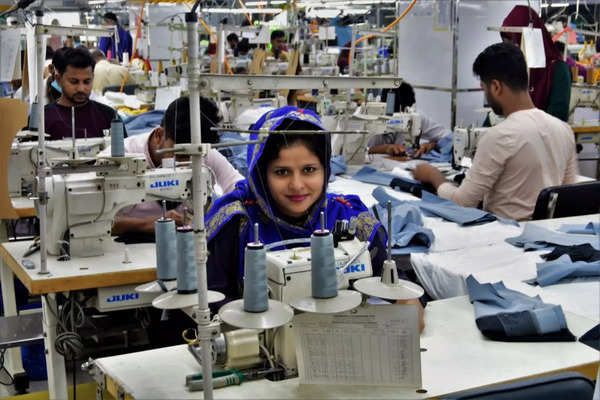
Strengthening domestic supply chains
The industry could also focus on strengthening domestic supply chains to reduce dependence on imported raw materials. This would not only lower production costs but also make the industry more resilient to global supply chain disruptions.
As Bangladesh’s textile industry faces an uncertain future, it is essential to recognise both the challenges and opportunities that lie ahead. The industry’s resilience, coupled with strategic investments and policy support, will be key to ensuring its continued success in a rapidly changing global landscape.
‘India, Deport Hasina Now’: Khaleda Zia’s Party In Bangladesh Roars At Modi Govt | Details
The future of Bangladesh’s textile industry is at a crossroads. The ouster of Sheikh Hasina introduces significant uncertainty, particularly in terms of political stability, investor confidence, and trade relations. However, the industry has shown remarkable resilience in the past, overcoming challenges and capitalising on opportunities to become a global textile hub.
To navigate the current uncertainties, industry leaders, policymakers, and workers must work together to ensure that Bangladesh’s textile industry continues to thrive. By diversifying markets, investing in innovation, and strengthening domestic supply chains, Bangladesh can maintain its position as a leading textile exporter in the years to come.























